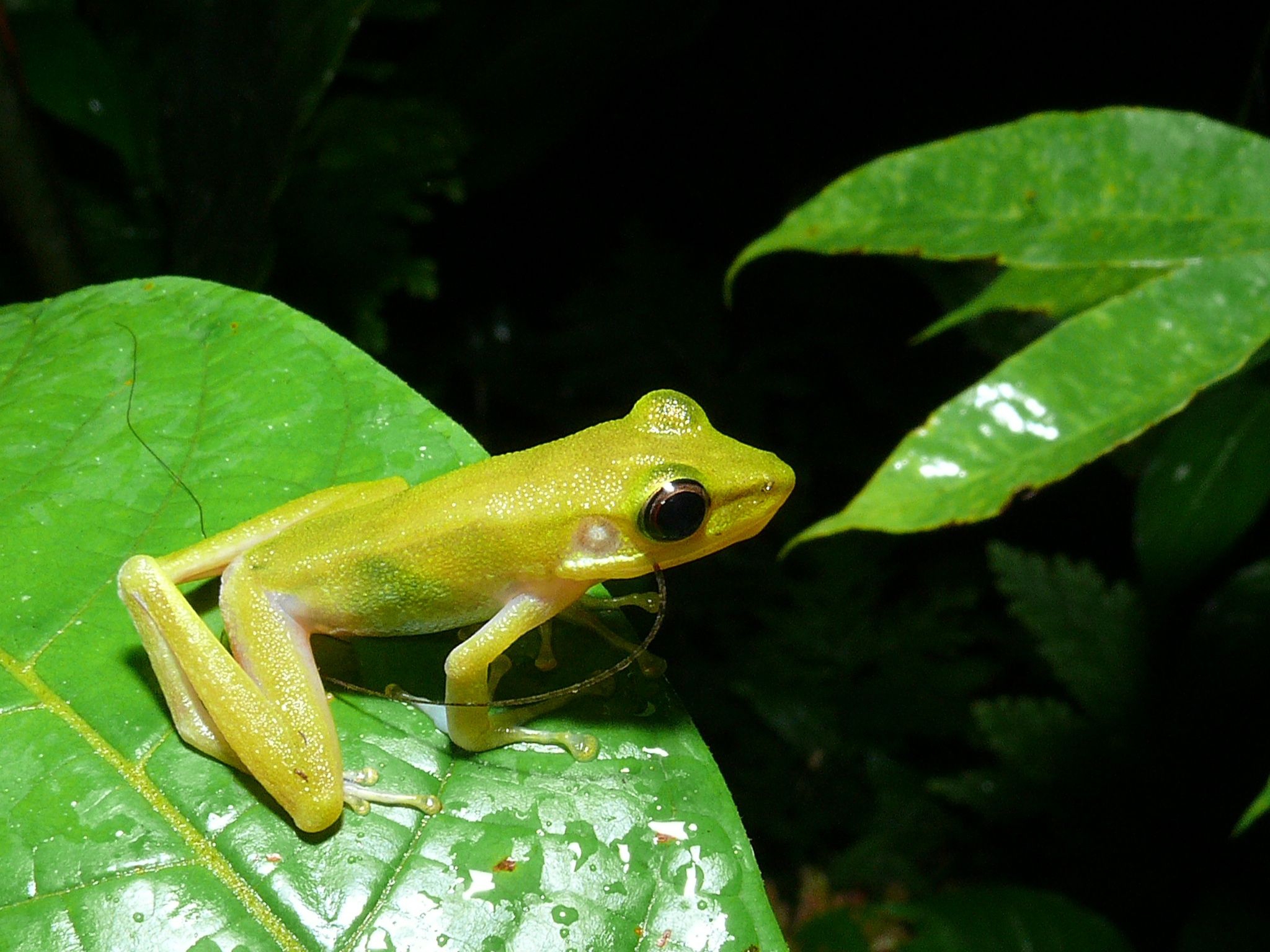| Citation |
|
Description |
Geographic Range [top]
Range Description: This species is known from Peninsular Thailand (Taylor, 1962), Peninsular Malaysia (Berry, 1975) and Singapore (Lim and Lim, 1992, Ming, 2000), including most islands including Phuket (Frith, 1977), Penang (Manthey and Grossmann, 1997) and Tioman (Berry, 1975). It has also been recorded from most of Borneo, the Great Nicobar Islands, in India, as well as from northern and western Sumatra, the Anambas Islands and the Natunas Islands in Indonesia. It occurs up to at least 1,000m asl.
Countries occurrence:
Native:
Brunei Darussalam; India; Indonesia; Malaysia; Singapore; Thailand
Additional data:
Range Map: Click here to open the map viewer and explore range.
Population [top]
Population: It is generally common in lowland forest streams, and is less common but still present in highland areas. In Borneo, because of its explosive breeding, it can appear very abundant or rare locally.
Current Population Trend: Stable
Additional data:
? Population severely fragmented: No
Habitat and Ecology [top]
Habitat and Ecology: It is typically seen on rocks and vegetation along small lowland forest streams, but is also seen away from streams in forest, or in highland areas. Primary and degraded forests are equally favoured, but a reasonably closed canopy and gently flowing water are essential. Adults disperse widely in the forest and may even be found in wooded gardens. Breeding occurs at quiet side pools of forest streams or in temporary ponds at the edges of forests. On Sumatra it also breeds in ponds and in paddy fields. Tadpoles live in side pools and quiet, deeper sections of streams (Grandison, 1972, Dring, 1979).
Systems: Terrestrial; Freshwater
Threats [top]
Major Threat(s): There are currently no significant threats to this species.
Conservation Actions [top]
Conservation Actions: Provided existing protected areas and watershed forests remain reasonably intact, the species appears secure. It is protected by national legislation in India.
Errata [top]
Errata reason: This species has been moved to the genus Chalcorana (previously Hylarana).
Citation: Peter Paul van Dijk, Djoko Iskandar, Robert Inger, Indraneil Das, Sushil Dutta, S.P. Vijayakumar. 2004. Chalcorana raniceps. (errata version published in 2016) The IUCN Red List of Threatened Species 2004: e.T58704A89367776. Downloaded on 02 May 2017.
Disclaimer: To make use of this information, please check the .
Feedback: If you see any errors or have any questions or suggestions on what is shown on this page, please provide us with feedback so that we can correct or extend the information provided
|

